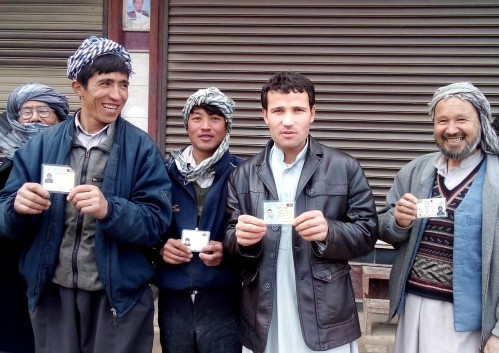The Taliban’s long-anticipated spring offensive announcement just came off the presses in five languages – Pashto, Dari, Arabic, Urdu and English. The announcement is as notable for things it does not mention as for things it does. Here are the five things about the Al Khandaq Operation that jump out:
- It is silent on President Ghani’s peace offer: The Taliban’s long-awaited response to President Ghani’s peace offer, made last month, is still not out. The statement does not directly address the peace offer but implicit in the launch of this year’s hostilities is the decision to forge ahead with the fight. Not only did the statement fail to respond to the Afghan government’s peace offer, it also dismisses any American overtures: “The Americans have no serious or sincere intentions of bringing the war to an end.” That line is significant because the US supported President Ghani’s peace offer.
- It won’t say explicitly if they want to disrupt the parliamentary elections: The biggest political event of the Afghan calendar this year is going to be the parliamentary and district council elections. The timeline was announced earlier this week — the same day when a bomb at a voter registration center killed and injured about 150 — but the Taliban leave it untouched. In years past, they have targeted election workers, candidates, campaigners and voters. This year, too, they have targeted election-related activity. But disrupting the elections is not an explicit part of their offensive priorities this year. Nobody should hold their breath on this, though.
- There’s literally no mention of the Afghan forces. It’s as if they never fired a shot at men in Afghan military uniforms, never blew up a base or never called anyone a hireling solder (they did). There’s mention of the “internal backers” of US troops, but no mention of Afghan forces — not even in the traditionally derisive Taliban language. This is significant because the Taliban are trying to cast this war as between them — the true defenders of Afghanistan and Afghan values — and foreign forces.
- Civilians continue to be targets: The Taliban make a big deal out of their noble intentions to protect civilian life and property, but their deliberate and indiscriminate attacks has ensured that civilian casualties have increased every year since the UN started compiling statistics in 2009. This year’s statement ends with instructions to their fighters to take “all precautionary measures should be taken while attacking a target.” But they continue to kill the vast majority of civilians killed in Afghanistan, according to the UN. Unfortunately, this year’s battle plan continues to conflate legitimate military objectives with civilian ones:
“[The operation’s] primary target will be the American invaders and their intelligence agents. Their internal supporters will be dealt with as a secondary target.”
The “internal supporters” is a catch-all phrase that could include the Afghan security forces, civil servants, teachers, aid workers, humanitarian workers and regular people who happen to be where the Taliban decide to set off a bomb.
- Their response to Trump’s South Asia strategy: continued defiance: The Taliban were pretty blunt about how they feel about Trump’s South Asia strategy when it was announced last August. Now they use their spring offensive as peg to rail against it again:
…the newly adopted war strategy of Trump has been ruthlessly implemented in the villages and rural areas against our oppressed Afghan people for the past nine months. Thousands of additional foreign forces are being deployed inside Afghanistan and they are supplied with new devastating weapons and vast military authorities.
If anyone was under the illusion that the precipitous drawdown of American troops from Afghanistan would take the wind out of the sails of Taliban casus belli, they are proven wrong. For one, Trump has amped up the tempo of air campaigns even as the number of US troops remains modest. Secondly, the Taliban are clinging to their anti-foreigner rhetoric, so their self-righteous continues with on end in sight.





 September 11, 2001 was a turning point for Americans and Afghans alike. America started the global war on terror and gave Afghanistan regime change, which was a boon for many Afghans, particularly the ethnic Hazaras whose long history of persecution is documented in English literature by Khaled Hosseini and
September 11, 2001 was a turning point for Americans and Afghans alike. America started the global war on terror and gave Afghanistan regime change, which was a boon for many Afghans, particularly the ethnic Hazaras whose long history of persecution is documented in English literature by Khaled Hosseini and 



